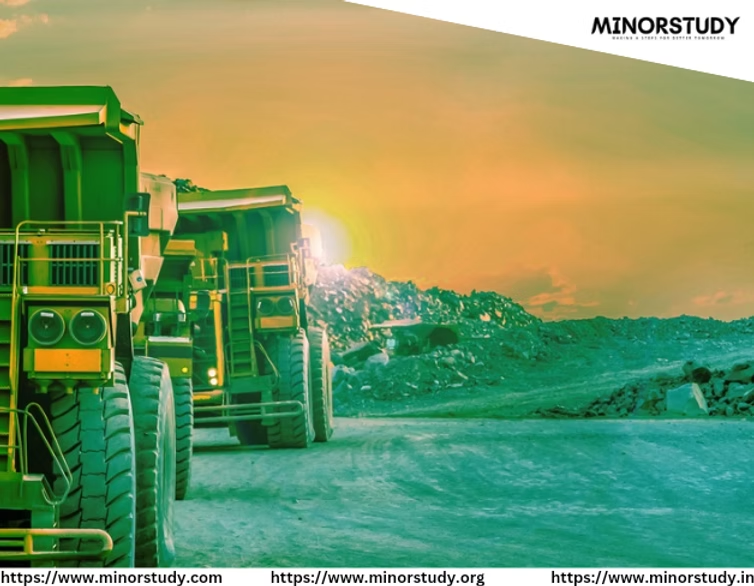Mining: An Overview
Mining is the process of extracting valuable minerals, metals, or other geological materials from the Earth. These materials are essential for various industries, including construction, manufacturing, energy, and technology. Mining encompasses a range of activities, from exploration and extraction to processing and refining.
Key Features of Mining
Aspect | Details |
Types of Mining | Surface mining, underground mining, placer mining, and in-situ mining. |
Materials Mined | Metals (gold, silver, copper), minerals (coal, limestone), and gemstones (diamonds). |
Applications | Construction, electronics, energy production, and industrial manufacturing. |
Environmental Impact | Land degradation, water pollution, and deforestation; mitigated through sustainable practices. |
Types of Mining Methods
Method | Description |
Surface Mining | Extracting minerals close to the Earth’s surface, including open-pit and strip mining. |
Underground Mining | Mining deep beneath the Earth using tunnels or shafts. |
Placer Mining | Extracting materials from riverbeds or stream sediments, commonly used for gold. |
In-Situ Mining | Extracting minerals through chemical solutions without moving the ore. |
Mountaintop Removal | A form of surface mining used for coal, involving removing mountain tops. |
Mining Processes
Exploration: Identifying and assessing mineral deposits.
Extraction: Removing minerals or ores from the Earth using various mining methods.
Processing: Crushing, grinding, and refining extracted materials to obtain usable forms.
Rehabilitation: Restoring mined land for environmental sustainability.
Importance of Mining
Economic Growth: Mining contributes significantly to the GDP of many countries.
Employment: Provides millions of jobs globally in extraction, processing, and related industries.
Raw Materials: Supplies essential materials for construction, technology, and energy sectors.
Technological Advancements: Minerals like lithium and cobalt are crucial for batteries and renewable energy technologies.
Environmental Impact of Mining
Impact | Details |
Land Degradation | Loss of fertile soil and landscape alteration. |
Water Pollution | Contamination of water sources due to mining runoff and chemicals. |
Air Pollution | Emissions of dust and gases during extraction and processing. |
Deforestation | Clearing of forests for mining activities. |
Biodiversity Loss | Disruption of ecosystems and wildlife habitats. |
Sustainable Mining Practices
Reclamation of mined land.
Reduction in water and energy usage.
Use of eco-friendly technologies.
Strict adherence to environmental regulations.
Key Mining Countries
Country | Primary Minerals or Metals |
China | Coal, rare earth elements, gold |
Australia | Iron ore, gold, coal |
Russia | Diamonds, palladium, nickel |
Canada | Nickel, gold, uranium |
South Africa | Gold, platinum, chromium |
Career Opportunities in Mining
Job Role | Responsibilities |
Mining Engineer | Design and oversee mining operations. |
Geologist | Assess mineral deposits and geological conditions. |
Environmental Specialist | Mitigate the environmental impact of mining activities. |
Metallurgist | Extract and process metals from ores. |
Safety Officer | Ensure workplace safety and compliance with regulations. |
Top Mining Industries
Energy: Coal and uranium mining for power generation.
Construction: Extraction of limestone, granite, and sand.
Technology: Mining of lithium, cobalt, and rare earth elements for electronics and batteries.
Jewelry: Gold, silver, and gemstone mining.
Technological Advancements in Mining
Automation and Robotics: Use of autonomous vehicles and drones for exploration and mining.
Artificial Intelligence (AI): Enhancing exploration accuracy and operational efficiency.
Green Mining Technologies: Reducing environmental impact through innovative solutions.
3D Mapping: Improving geological surveys and planning.
Top Mining Companies
Company | Country |
BHP | Australia |
Rio Tinto | UK/Australia |
Vale | Brazil |
Anglo American | UK |
Glencore | Switzerland |
FAQs About Mining
What are the main types of mining?Surface mining, underground mining, placer mining, and in-situ mining.
How does mining affect the environment?It can lead to deforestation, water pollution, and biodiversity loss, though sustainable practices can mitigate these effects.
What is sustainable mining?Mining practices that minimize environmental impact and ensure the rehabilitation of mined land.
Why is mining important?Mining provides essential raw materials for construction, technology, energy, and manufacturing industries.
Conclusion
Mining is a vital industry that supports modern society by providing essential resources. While it has significant economic benefits, it also poses environmental and social challenges. Embracing sustainable mining practices and technological innovations can help balance industrial growth with environmental stewardship.









Great amazing things here. I?¦m very glad to see your article. Thank you so much and i’m looking forward to contact you. Will you kindly drop me a e-mail?